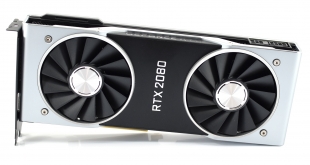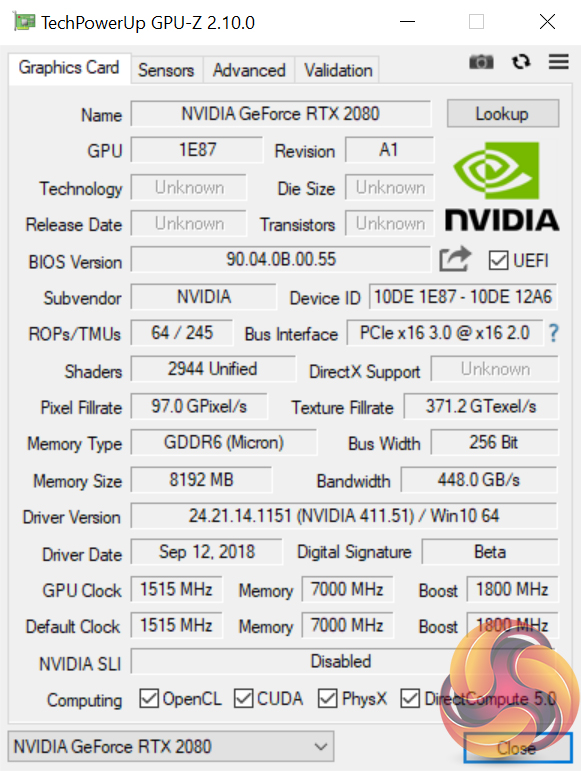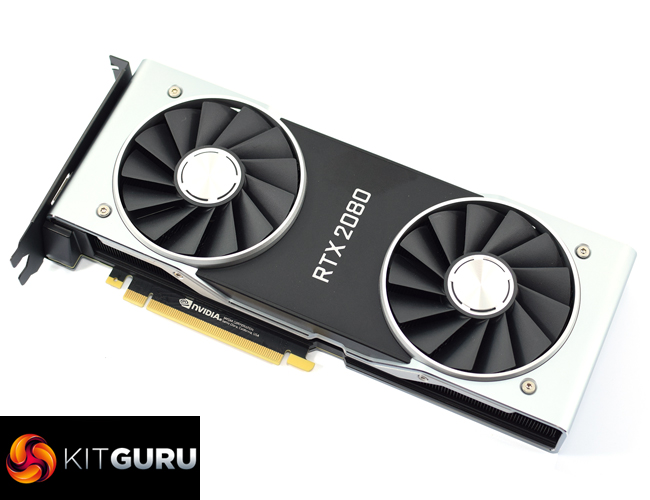
It has been over two years since Nvidia announced the GTX 1080 in Texas. Those two years saw its GeForce 10 series, based on the Pascal architecture, dominate the graphics card market – if you wanted the fastest consumer card available, you had to go with Team Green.
Last month in Cologne, Germany, Nvidia took things a step further with the launch of its GeForce 20 series, and the unveiling of the new Turing architecture. Today we have reviews of both the RTX 2080 and RTX 2080 Ti, but this article is concerned with the former graphics card. Priced at £749 here in the UK – more than last generation's flagship GTX 1080 Ti – what can the RTX 2080 offer to those who don't want to spend over £1000 for a single graphics card?
For the last few weeks, the rumour mill has been spinning at a furious rate, focusing on the question: why didn't Nvidia talk about real-world gaming performance of its new GPUs? Well, today we can present a full array of game benchmarks to put that question to bed.
It is also worth noting right from the off, considering that real-time ray tracing is such a big new feature for these cards, that today we cannot present benchmarks using ray tracing in games. The reason? Ray tracing support in games is currently dependent on Microsoft releasing DirectX Raytracing (DXR) – its API update to DX12. This is currently scheduled for October, and that's all we know.
We have tested one demo utilising real-time ray tracing, which is detailed later in the review, but apart from that, all the benchmark figures and graphs are from games as we know them (i.e. games that use rasterisation, not ray tracing).
| GPU | RTX 2080 Ti (FE) | GTX 1080 Ti (FE) | RTX 2080 (FE) | GTX 1080 (FE) |
| SMs | 68 | 28 | 46 | 20 |
| CUDA Cores | 4352 | 3584 | 2944 | 2560 |
| Tensor Cores | 544 | N/A | 368 | N/A |
| Tensor FLOPS | 114 | N/A | 85 | N/A |
| RT Cores | 68 | N/A | 46 | N/A |
| Texture Units | 272 | 224 | 184 | 160 |
| ROPs | 88 | 88 | 64 | 64 |
| Rays Cast | 10 Giga Rays/sec | 1.1 Giga Rays/sec | 8 Giga Rays/sec | 0.877 Giga Rays/sec |
| RTX Performance | 87 Trillion RTX-OPS | 11.3 Trillion RTX-OPS | 60 Trillion RTX-OPS | 8.9 Trillion RTX-OPS |
| GPU Boost Clock | 1635 MHz | 1582 MHz | 1800 MHz | 1733 MHz |
| Memory Clock | 7000 MHz | 5505 MHz | 7000 MHz | 5005 MHz |
| Total Video Memory | 11GB GDDR6 | 11GB GDDR5X | 8GB GDDR6 | 8GB GDDR5X |
| Memory Interface | 352-bit | 352-bit | 256-bit | 256-bit |
| Memory Bandwidth | 616 GB/sec | 484 GB/sec | 448 GB/sec | 320 GB/sec |
| TDP | 260W | 250W | 225W | 180W |
Note: GPU-Z has not yet been updated to show all of the RTX 20 series specs.
In terms of core specs, the Nvidia RTX 2080 sports 2944 CUDA cores with 368 Tensor Cores and 46 RT (ray tracing) cores. You may be unfamiliar with those last two metrics but it is something we address further on the next page. The chip itself is also built on a new 12nm process.
The RTX 2080 Founders Edition (FE) sports an aggressive clock speed out of the box, with a rated boost clock of 1800 MHz. There is still GPU Boost technology, however – now GPU Boost 4.0 – which will dynamically take this clock speed as far as it can, so we will see what real-world clock speed is like later in the review.
Lastly, 8GB of memory is provided, but in the shape of new GDDR6 chips, rather than the GDDR5X memory of the previous generation. Its 7000 MHz clock equates to 14Gbps, and it operates over a 256-bit bus with a total memory bandwidth figure of 448 GB/s – a 40% increase over the GTX 1080.
 KitGuru KitGuru.net – Tech News | Hardware News | Hardware Reviews | IOS | Mobile | Gaming | Graphics Cards
KitGuru KitGuru.net – Tech News | Hardware News | Hardware Reviews | IOS | Mobile | Gaming | Graphics Cards




